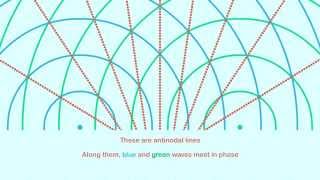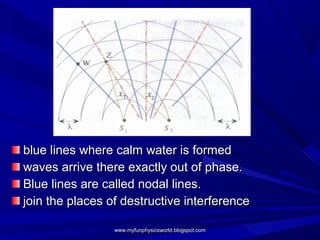How Does Wavelength Impact Nodal Lines In Physics?
Nodal And Anti-Nodal Lines
Keywords searched by users: How does wavelength affect nodal lines how does wavelength affect interference pattern, nodal and antinodal lines, what are nodal lines, two sources interference of light, types of wave interference, wavelength interference, doppler effect physics, sound doppler effect
What Affects The Number Of Nodal Lines?
The presence and arrangement of nodal and antinodal lines in an interference pattern are influenced by several key factors, primarily the spatial separation, phase relationship, and frequency of the sources involved. To provide a clearer understanding of this phenomenon, it’s essential to note that patterns with a higher count of nodal lines typically originate from sources positioned at a considerable distance from each other, emitting high-frequency waves characterized by shorter wavelengths. In essence, the specific characteristics of the sources, including their separation distance and the wavelength of their emitted waves, play a significant role in determining the number and positioning of nodal and antinodal lines within the interference pattern.
Does Frequency Increase Nodal Lines?
Does Increasing Frequency Lead to More Nodal Lines?
When we delve into the relationship between frequency and the emergence of nodal lines, a fascinating phenomenon unfolds. As the frequency of a vibrating system is raised, it triggers the manifestation of additional resonances, each accompanied by a distinctive pattern of nodal lines. These nodal lines are essentially regions within the vibrating medium where the displacement of particles is minimal or non-existent. Therefore, by elevating the frequency, we not only unlock new resonances but also unveil a progressively intricate web of nodal lines, providing a clearer insight into the complex dynamics of vibrational systems. In essence, higher frequencies shed light on the intricate interplay of nodal lines in a manner that enriches our understanding of this intriguing phenomenon.
How Does Wavelength Affect Interference Patterns?
The relationship between wavelength and interference patterns is crucial to understand. In this context, it’s important to note that as the frequency of a wave increases, its corresponding wavelength becomes shorter. When light waves, for example, pass through slits or obstacles, they exhibit a phenomenon known as diffraction, where they spread out. However, shorter wavelength waves exhibit less diffraction compared to longer ones. This reduced spreading results in a smaller angle at which constructive interference occurs. Constructive interference happens when two waves align perfectly, with a difference in their path length being equal to one full wavelength. So, shorter wavelengths not only diffract less but also produce a more tightly focused interference pattern due to their smaller angle of constructive interference. This relationship between wavelength and interference patterns is fundamental in various fields, including optics and wave physics.
Found 42 How does wavelength affect nodal lines



Categories: Update 35 How Does Wavelength Affect Nodal Lines
See more here: khodatnenbinhchau.com

As the wavelength increases, the spacing between the nodal lines and the anti-nodal lines increases. That is, the nodal and antinodal lines spread farther apart as the wavelength gets larger.The location and number of nodal and antinodal lines in an interference pattern varies depending on the spacing, phase and frequency of the sources. In general, the patterns with the most nodal lines come from speakers that are far apart that are producing high frequencies (and therefore short wavelengths).As frequency is increased, other such resonances occur, with more nodal lines becoming apparent.
Learn more about the topic How does wavelength affect nodal lines.
- 2-Point Source Interference Patterns – The Physics Classroom
- Interference in two dimensions – Understanding Sound
- Nodal Line – an overview | ScienceDirect Topics
- Lecture 25
- Interference of Waves in Two Dimensions
- Physics Tutorial: The Path Difference
See more: khodatnenbinhchau.com/category/food